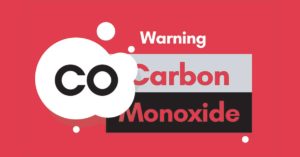
What is Carbon Monoxide?
Carbon monoxide is a toxic, colorless, odorless gas. Since CO gas has no odor on its own, other gases that have scents are added to it to detect a leak. OSHA defines CO as a “common industrial hazard resulting from the incomplete burning of material containing carbon such as natural gas, gasoline, kerosene, oil, propane, coal, or wood.” Car and boat engines, furnaces, generators, and other combustion engines produce CO.
CO displaces oxygen in your blood, causing symptoms including headaches, fatigue, dizziness, drowsiness, nausea, chest pain, vomiting, confusion, muscle weakness, and loss of consciousness. The onset of these symptoms can occur quickly and without warning, leading to suffocation and death as your lungs, brain, and heart fail from lack of oxygen.
How You Can Prevent Carbon Monoxide Poisoning
One of the most tragic aspects of CO poisoning and death is that, in most cases, it is preventable. How can you make sure that your family doesn’t fall victim to CO poisoning?
- Carbon monoxide alarms:
Many newer model fire and smoke alarms have integrated CO alarms. If you don’t need a new fire/smoke alarm, you can purchase a separate CO alarm. Have at least one installed on every level of your home. Replace the batteries whenever you change your fire/smoke alarm batteries, which should be at least two to four times a year, or when the seasons change.
- Generator and grill safety:
Most of us have seen news stories about fatalities caused when homeowners use power generators that don’t have sufficient ventilation. Never run a power generator indoors or in an enclosed space attached to your home, such as a garage or basement. The same goes for barbecues, charcoal grills, and camp stoves. Use these cooking appliances outside where there is plenty of ventilation.
- Maintain or replace gas appliances:
Periodically inspect gas appliances for potential issues with hoses and fittings. Stoves, space heaters, water heaters, and furnaces can produce and leak CO into the air. Have a qualified service technician replace old parts.
- Maintain home heating systems:
Have your oil or gas home heating system inspected and regularly serviced or tuned-up, at least once or twice a year, by a fully qualified HVAC technician. They can clean, replace, and service older or faulty components, ensuring that the system isn’t leaking CO or other harmful pollutants. Remember, CO is produced by burning fossil fuels, so natural gas and oil heating systems require maintenance.
Oil Heating Maintenance and Repair Service
Ensure your family’s safety by having your home’s heating system inspected, serviced, and repaired by the Tragar Home Services experts. We offer a full range of qualified repair services for oil heat and gas heat systems. Tragar has been providing Nassau County and Suffolk County residents with premier 5-star service for over 60 years. For additional information about heating system upgrades or schedule a COD oil delivery, call Tragar Express today at (516) 221-2559. You can also email us at info@tragarexpress.com .


